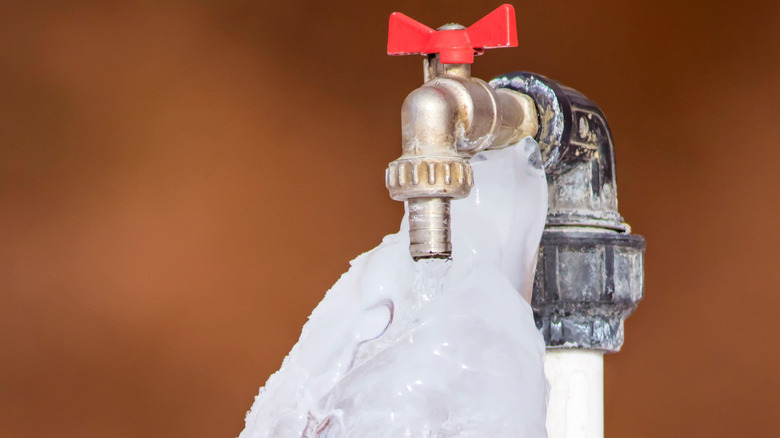Tips to Maintain Your Pipes from Freezing Damage: Important Tips
Tips to Maintain Your Pipes from Freezing Damage: Important Tips
Blog Article
The article which follows on the subject of How to Prevent Your Pipes From Freezing is highly entertaining. Read it for yourself and see what you think about it.

Winter can ruin your pipes, specifically by freezing pipelines. Below's how to prevent it from happening and what to do if it does.
Introduction
As temperatures decline, the threat of icy pipelines increases, possibly bring about pricey repair services and water damage. Understanding how to avoid frozen pipes is critical for homeowners in cool environments.
Avoidance Tips
Insulating at risk pipelines
Cover pipes in insulation sleeves or utilize heat tape to secure them from freezing temperatures. Concentrate on pipes in unheated or exterior areas of the home.
Home heating strategies
Keep interior areas appropriately heated, particularly locations with plumbing. Open cupboard doors to allow cozy air to flow around pipes under sinks.
Just how to determine frozen pipes
Search for lowered water circulation from faucets, uncommon smells or sounds from pipes, and visible frost on exposed pipes.
Long-Term Solutions
Architectural adjustments
Take into consideration rerouting pipelines away from exterior wall surfaces or unheated locations. Include extra insulation to attics, basements, and crawl spaces.
Updating insulation
Purchase top notch insulation for pipes, attic rooms, and walls. Appropriate insulation assists keep consistent temperatures and decreases the risk of frozen pipelines.
Protecting Exterior Plumbing
Yard pipes and outside faucets
Disconnect and drain pipes garden tubes before winter. Set up frost-proof faucets or cover outside taps with shielded caps.
Comprehending Icy Pipes
What triggers pipes to freeze?
Pipelines ice up when exposed to temperature levels listed below 32 ° F (0 ° C) for prolonged durations. As water inside the pipelines ices up, it expands, putting pressure on the pipe walls and potentially triggering them to break.
Threats and damages
Frozen pipelines can cause water supply disruptions, building damages, and pricey fixings. Ruptured pipelines can flood homes and create considerable architectural damage.
Indications of Frozen Pipeline
Determining frozen pipelines early can avoid them from bursting.
What to Do If Your Pipes Freeze
Immediate actions to take
If you believe icy pipelines, keep taps available to alleviate stress as the ice thaws. Use a hairdryer or towels taken in hot water to thaw pipelines slowly.
Verdict
Avoiding icy pipes needs aggressive steps and fast reactions. By comprehending the reasons, indicators, and preventive measures, homeowners can safeguard their pipes throughout cold weather.
5 Ways to Prevent Frozen Pipes
Drain Outdoor Faucets and Disconnect Hoses
First, close the shut-off valve that controls the flow of water in the pipe to your outdoor faucet. Then, head outside to disconnect and drain your hose and open the outdoor faucet to allow the water to completely drain out of the line. Turn off the faucet when done. Finally, head back to the shut-off valve and drain the remaining water inside the pipe into a bucket or container. Additionally, if you have a home irrigation system, you should consider hiring an expert to clear the system of water each year.
Insulate Pipes
One of the best and most cost-effective methods for preventing frozen water pipes is to wrap your pipes with insulation. This is especially important for areas in your home that aren’t exposed to heat, such as an attic. We suggest using foam sleeves, which can typically be found at your local hardware store.
Keep Heat Running at 65
Your pipes are located inside your walls, and the temperature there is much colder than the rest of the house. To prevent your pipes from freezing, The Insurance Information Institute suggests that you keep your home heated to at least 65 degrees, even when traveling. You may want to invest in smart devices that can keep an eye on the temperature in your home while you’re away.
Leave Water Dripping
Moving water — even a small trickle — can prevent ice from forming inside your pipes. When freezing temps are imminent, start a drip of water from all faucets that serve exposed pipes. Leaving a few faucets running will also help relieve pressure inside the pipes and help prevent a rupture if the water inside freezes.
Open Cupboard Doors
Warm your kitchen and bathroom pipes by opening cupboards and vanities. You should also leave your interior doors ajar to help warm air circulate evenly throughout your home.

As a fervent person who reads about How To Avoid Freezing Pipes, I figured sharing that segment was really useful. Sharing is good. Helping people is fun. We enjoy reading our article about Winter Plumbing Precautions: Preventing Frozen Pipes.
Set Up An Appointment Report this page